Recombinant Human DUSP3 protein(Met1-Pro185), His&GST-tagged
| Cat.No. : | DUSP3-3807H |
| Product Overview : | Recombinant Human VHR (P51452) (Met 1-Pro 185) was expressed in Insect Cells, fused with the N-terminal polyhistidine-tagged GST tag at the N-terminus. |
- Specification
- Gene Information
- Related Products
- Case Study
- Application
- Download
| Species : | Human |
| Source : | Insect Cells |
| Tag : | GST&His |
| Protein Length : | 1-185 a.a. |
| Form : | Lyophilized from sterile 20mM Tris, 500mM NaCl, pH 8.0, 2mM GSH Normally 5 % - 8 % trehalose, mannitol and 0.01% Tween80 are added as protectants before lyophilization. |
| Molecular Mass : | The recombinant human VHR/GST chimera consists of 422 amino acids and has a calculated molecular mass of 48.3 kDa. It migrates as an approximately 44 kDa band in SDS-PAGE under reducing conditions. |
| Endotoxin : | < 1.0 EU per μg of the protein as determined by the LAL method |
| Purity : | > 96 % as determined by SDS-PAGE |
| Storage : | Samples are stable for up to twelve months from date of receipt at -20°C to -80°C. Store it under sterile conditions at -20°C to -80°C. It is recommended that the protein be aliquoted for optimal storage. Avoid repeated freeze-thaw cycles. |
| Reconstitution : | It is recommended that sterile water be added to the vial to prepare a stock solution of 0.2 ug/ul. Centrifuge the vial at 4°C before opening to recover the entire contents. |
| Gene Name | DUSP3 dual specificity phosphatase 3 [ Homo sapiens ] |
| Official Symbol | DUSP3 |
| Synonyms | DUSP3; dual specificity phosphatase 3; vaccinia virus phosphatase VH1 related , VHR; dual specificity protein phosphatase 3; vaccinia H1-related phosphatase; vaccinia virus phosphatase VH1-related; dual specificity protein phosphatase VHR; serine/threonine specific protein phosphatase; VHR; |
| Gene ID | 1845 |
| mRNA Refseq | NM_004090 |
| Protein Refseq | NP_004081 |
| MIM | 600183 |
| UniProt ID | P51452 |
| ◆ Recombinant Proteins | ||
| DUSP3-28377TH | Recombinant Human DUSP3 | +Inquiry |
| DUSP3-1355R | Recombinant Rhesus monkey DUSP3 Protein, His-tagged | +Inquiry |
| DUSP3-2260H | Recombinant Human DUSP3 Protein, Myc/DDK-tagged, C13 and N15-labeled | +Inquiry |
| DUSP3-3664H | Recombinant Human DUSP3 protein, GST-tagged | +Inquiry |
| DUSP3-2007H | Recombinant Human DUSP3 Protein (Ser2-Pro185), N-His tagged | +Inquiry |
| ◆ Cell & Tissue Lysates | ||
| DUSP3-001HCL | Recombinant Human DUSP3 cell lysate | +Inquiry |
Case 1: Tambe MB, et al. FEBS Lett. 2016
Dual Specificity Phosphatase-3 (DUSP3/VHR) modulates cell cycle regulation and mitotic spindle dynamics by deactivating MAPK signaling pathways ERK1/2 and JNK. This study reveals that DUSP3 depletion via RNA interference induces ERK1/2-dependent multipolar spindle formation in human cancer cells, disrupting mitosis. Restoring bipolar spindle architecture through ERK1/2 inhibitors or DUSP3 overexpression confirms its essential role in mitotic progression. The findings demonstrate DUSP3’s critical function in maintaining ERK1/2 activity thresholds during M-phase, offering insights for cancer therapeutics targeting cell cycle checkpoints and kinase-phosphatase balance.
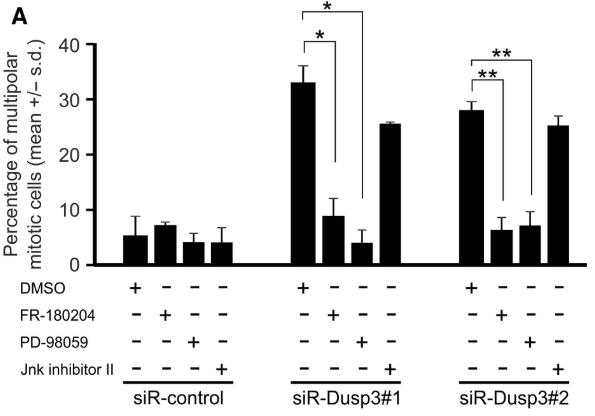
Fig1. The siR-control, siR-Dusp3#1 and siR-Dusp3#2 transfected HeLa cells were treated with Mek inhibitor (PD98059), Erk1/2 inhibitor (FR180204) or Jnk inhibitor II for 24 h before fixation and immunostainings.
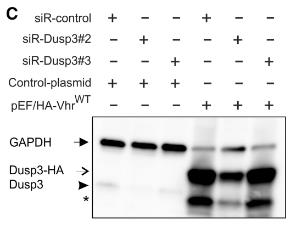
Fig2. HeLa cells were cotransfected with different combinations of siR-control, siR-Dusp3#2 or siR-Dusp3#3 and control plasmid.
Case 2: Torres TEP, et al. Biochim Biophys Acta Gen Subj. 2017
Radiotherapy triggers tumor regression by inducing DNA damage, yet molecular mechanisms linking genomic instability to cancer progression remain unclear. This study explores DUSP3, a phosphatase regulating MAPKs, in DNA damage response (DDR) pathways. Combining DUSP3 inhibition (pharmacological/siRNA) with gamma radiation reduced cancer cell proliferation/survival, amplified DNA strand breaks (via elevated γ-H2AX foci), and impaired homologous recombination (HR) and non-homologous end-joining (NHEJ) repair efficiency. Notably, DUSP3 loss heightened radiosensitivity even in ATM-deficient cells, independent of MAPK signaling. Findings suggest DUSP3 as a therapeutic target to disrupt cancer cell DDR, enhancing radiotherapy efficacy through genomic instability and impaired DNA repair mechanisms.
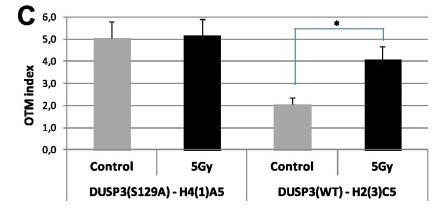
Fig1. Alkaline comet assays of DUSP3-WT and DUSP3-S129A showed DNA damage accumulation at 3 h after exposure to 5 Gy of gamma radiation.
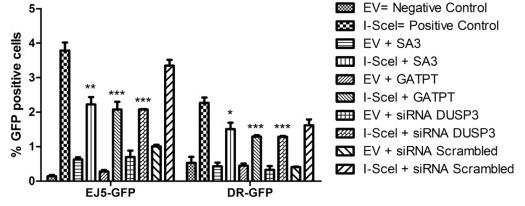
Fig2. Inhibition or silencing of DUSP3 strongly affects homologous recombination and non-homologous end-joining repair mechanisms.
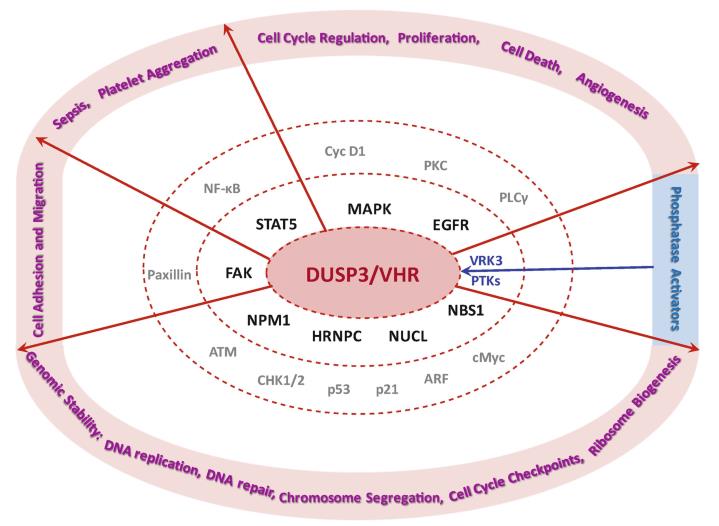
Fig1. DUSP3 substrates, validated both in vivo and in vitro (first layer of neighbors), identified in vitro, and predicted in silico (first and second layer of neighbors), all work in conjunction to mediate this phosphatase’s diverse biological functions. (Lucas Falcão Monteiro, 2019)
Not For Human Consumption!
Inquiry
- Reviews
- Q&As
Ask a Question for All DUSP3 Products
Required fields are marked with *
My Review for All DUSP3 Products
Required fields are marked with *
Inquiry Basket


